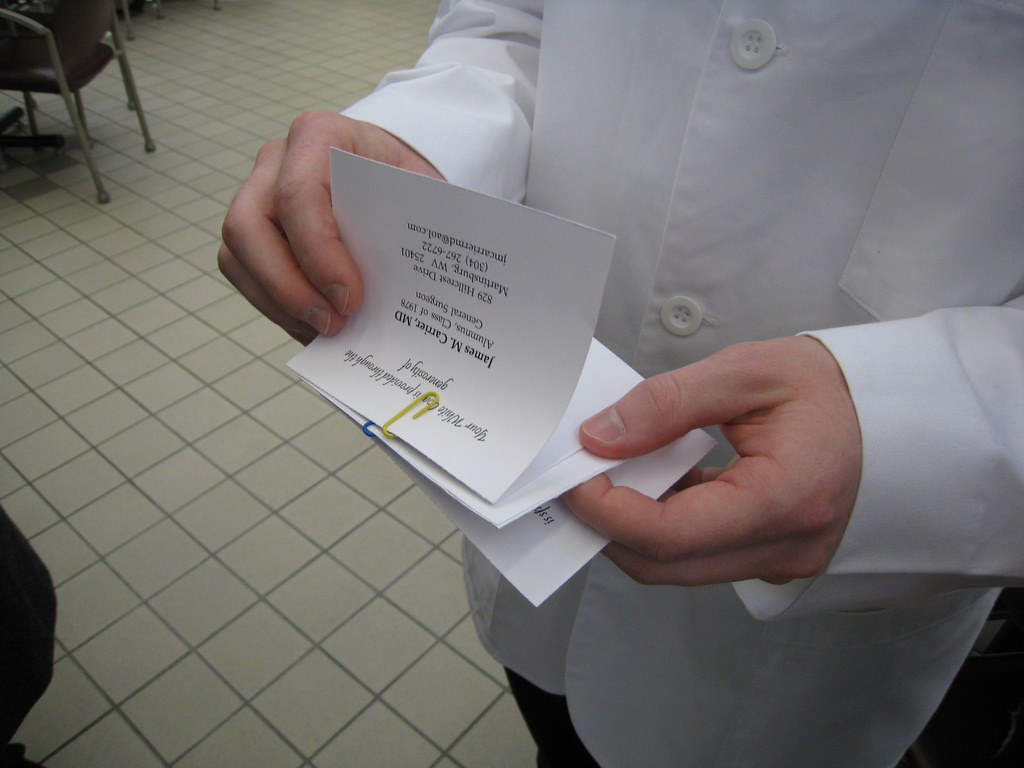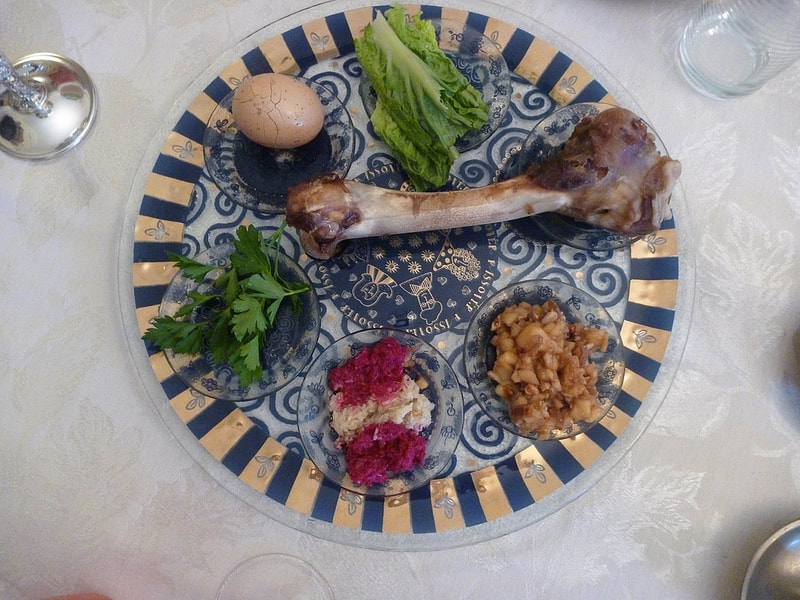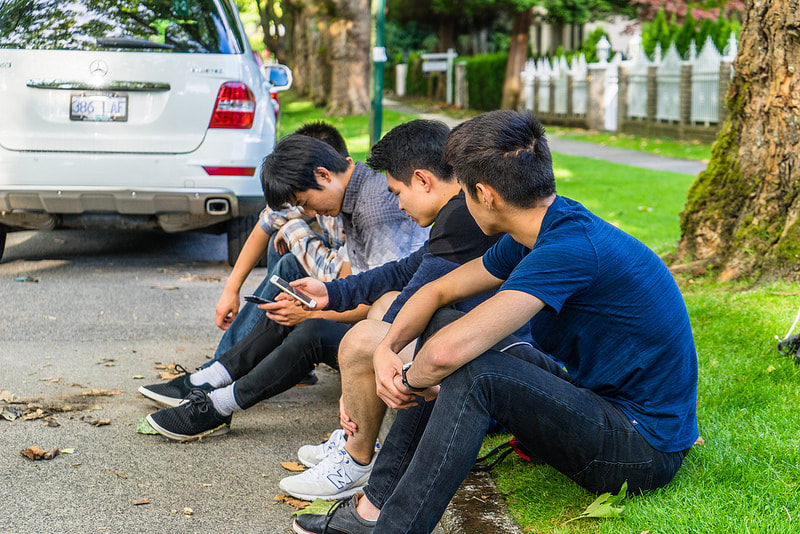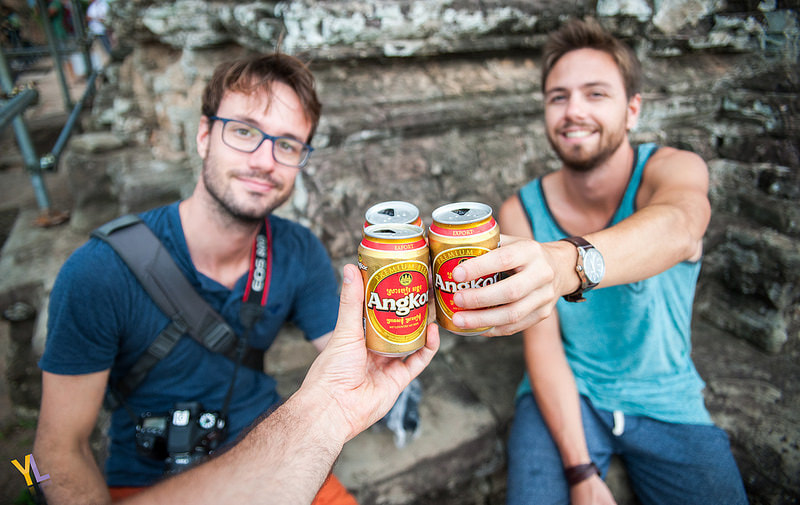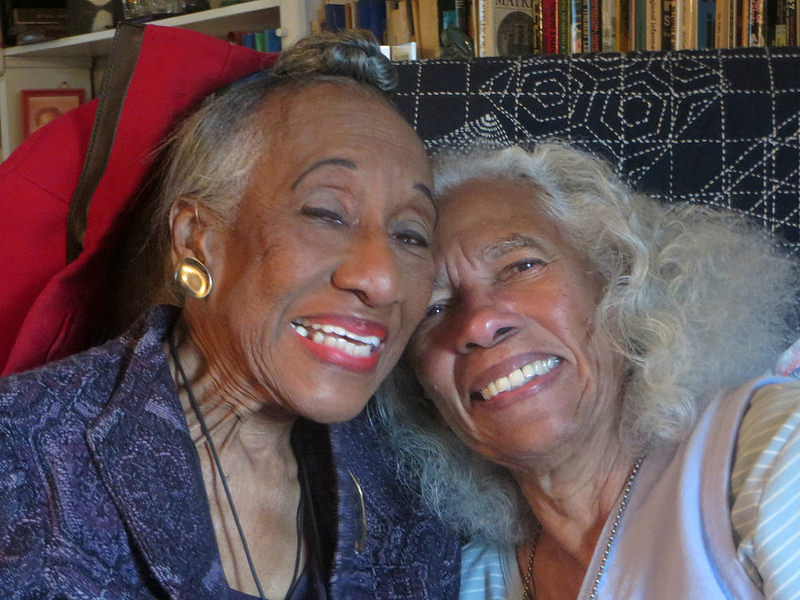- Home
- Process Worldview
- Community
- Art and Music
- Whitehead and Process Thinking
- Podcasts
- Spirituality
- Ecological Civilization
- Education
- Contact
- Social Justice
- Science
- Animals
- Sacred Poems
- Whitehead Videos
- Index of All Titles
- Practicing Process Thought
- Process Spirituality: A Spiritual Alphabet
- Recent Posts
Can I, Too, Be an Intefaith Leader?
Interfaith Leadership in Daily Life
by Teri Daily
|
Having grown up in a town of two thousand people in rural North Carolina, my first true “interfaith” experience occurred when I moved to New Haven, Connecticut, for medical school. I had attended a college in the South with a fairly diverse student body, but the large number of students and the homogeneity of my particular group of friends resulted in few transformative, interfaith encounters. Medical school offered an entirely different experience. My class consisted of one hundred students from diverse locations and multiple religious traditions. We were together at least eight hours a day for lectures, labs, and meals, leaving almost no chance that we would make it through the first year without bumping into one another metaphorically as well as literally. Upon moving into the medical school dorm, Robin Perlmutter, a Jewish classmate who lived down the hall, befriended me almost immediately. As she had grown up locally and her family still lived in New Haven, I became a frequent visitor to her parents’ home. When I stayed in town between my first and second years to do research, her family invited me to live with them through the summer. I was home most Fridays by sunset for the recitation of Shabbat blessings, and they often waited Sunday dinner on my return from 5:30 pm Eucharist. I came to know a larger Jewish community through afternoons spent at a local beach club and meals at a Jewish diner (where the owner Al introduced me to latkes). Even when Robin and I left her parents’ home at the end of that summer to move into an apartment downtown, her family remained an important part of my life in New Haven. Friendships with the Perlmutters and other members of the New Haven Jewish community were not the only interfaith relationships I developed in medical school. I came to know Jewish, Hindu, and Muslim classmates, but even these friendships were strengthened because they were shared with my friend Robin. For example, I celebrated Passover with the Perlmutters all four years that I lived in New Haven, and it was always a celebratory occasion shared with guests from a variety of faith traditions. Our Muslim friend Ahmed, whose family came to the US from Egypt, attended at least one Passover dinner. Smiles and laughter (including a “Sorry, Ahmed” from Robin) reduced any awkwardness during the telling of Exodus story, especially the part about the killing of the first-born Egyptians. Our Mormon friend Doug attended as well and, of course, I brought a Christian presence to the Passover celebration. When Robin’s mother was bat mitzvah’d at the age of almost sixty, Ahmed, Doug, and I shared a pew. It is important, however, not to give the impression that all my interfaith experiences during medical school were without conflict. One day a Jewish classmate slipped an article about the merits of legalized abortion under my door; he had seen me leave each Sunday morning for church and assumed that, as a Christian, I must be in favor of overturning Roe v. Wade. (He was unfamiliar with the diversity within the Christian tradition even in the South.) For several days each December, Robin and I lit the menorah and then turned on Christmas tree lights. But before a tree even entered our apartment, Robin requested that no crosses be part of the ornaments, a request that revealed her discomfort with some symbolism within the Christian tradition. These interactions, as well as others not recounted here, were placed and borne within the larger context of our friendships, of relationships that were more than these moments when our different traditions seemed to brush up against one another in a way that caused tension. My friend Robin would never have seen herself as an interfaith leader, but interfaith relationships were a part of her daily life. And, largely through her, they became a part of mine as well. Micro-bridges and Macro-bridges People like Robin excel at building interfaith “micro-bridges” – personal relationships with those who orient around religion differently. Interfaith friendships do not usually begin with the explicit intention of forming a relationship with someone from another faith; instead, they tend to evolve when space is made for both persons to bring their religious identities to the friendship, to discussions, activities, and shared social circles. True interfaith relationships also involve making space within oneself – space to be transformed by the other, space for one’s faith to transformed as well. In truth, it is usually through micro-bridges, or personal relationships, that interfaith dialogue results not just in an exchange of facts or information, but also in a willingness to grow and to be changed by the other.[1] In her book The Im-Possibility of Interreligious Dialogue, Catherine Cornille argues that for interfaith interactions to result in such growth and change (both at the individual level and at the level of the religions themselves), the following essential conditions must be met: doctrinal or epistemic humility, commitment to a religious tradition, interconnection, empathy, and hospitality to the authentic truth of the other.[2] Two of these conditions relate to the understanding of truth within one’s religious tradition. Doctrinal or epistemic humility comes from the recognition that, as finite creatures, any knowledge we have of God or “the infinite ultimate” is necessarily partial and incomplete; therefore, truth is not limited to the doctrines of one’s own tradition but is to be found in other religions as well. Such humility is implied in another of the requirements listed above – hospitality to the authentic truth of the other, or an “attitude of generous openness to the (possible) presence of truth in the other religion.”[3] Another essential condition for interfaith dialogue/relationship, according to Cornille, is the commitment to a religious tradition. Some may see this stipulation as problematic. After all, what does it say about the possibility for transformative interfaith dialogue for those who identify as atheistic, spiritual-but-not-religious, new age, or belonging to more than one tradition? I choose to understand this requirement for commitment to a religious tradition in the broadest possible terms – as “a place to stand,” a perspective from which to approach the other, and a self-awareness that includes one’s own motivations, beliefs, and attitudes. While Cornille argues that religious commitment supplies an authority “beyond one’s own subjective will and judgment,”[4] some philosophies, schools of thought, or worldviews can, in a similar way, provide normative values. The final two conditions set forth by Cornille are the presence of interconnections and empathy. Interconnectedness is the sense that common ground can be found between religions, if not in beliefs or practices, then at least in response to external challenges such as violence, hunger, or environmental crises. Empathy refers to another kind of connection; it requires a willingness to not just learn the facts or historical aspects of another religion, but to be willing to imagine oneself in the place of its practitioners – to imagine how that belief system motivates one’s actions, how practices stir devotion and desire, how sacred texts within the tradition guide everyday life. No relationship will exhibit all of these conditions or convictions perfectly at every moment. When they are present, however, the transformative power of an interfaith friendship forms stones or planks in the larger bridge of organized interfaith work. Interfaith work on this larger scale, with the purpose of organizing a group of people oriented to religion differently towards a common goal, can be referred to as the formation of macro-bridges. Macro-bridges result from such things as dialogue between religious institutions or councils, service projects involving people of different faith groups, educational interfaith workshops, events celebrating specific ethnic or religious groups, or diplomatic initiatives in which religion figures prominently. While large-scale interfaith work offers the possibility to mobilize various religious communities for common action, increase social capital through well-organized networks that bridge different religious groups, and promote widespread interfaith education and awareness, the accomplishment of this work requires the presence of micro-bridges to establish goals and cement plans. An Interfaith Leader? Here is the question I want to ask: Is my friend Robin, builder of micro-bridges, an interfaith leader? Eboo Patel defines an interfaith leader as “someone who can create the spaces, organize the social processes, and craft the conversations such that people who orient around religion differently can have a common life together.”[5] This definition implies that a leader comes to his or her role with awareness, technique, and purpose. By this definition, Robin would not qualify as an interfaith leader. But Patel does not stop with the definition above; instead, he immediately quotes John Kotter as saying that “Change is the function of leadership.”[6] Based on this understanding of leadership, Patel gives this somewhat different definition of an interfaith leader: “Interfaith leaders are people who cause other people to change their attitudes and actions with respect to religious diversity.”[7] At first glance, this definition holds more promise for designating people like Robin, those who excel at forming micro-bridges, as interfaith leaders, for there is no mention of scale here. However, the term “function” continues to imply that leadership is a technical and not solely relational role and, in fact, Patel’s later assertion that interfaith leadership requires the articulation of a clear vision solidifies intentionality and purpose as characteristics of leadership. I have come to view leadership, though, in a broader way, subscribing to the understanding of leaders as people who create the conditions under which others must live and work. At the most basic level, then, all of us are leaders in certain contexts. Parents create the conditions under which their children grow, teachers create the conditions under which students learn, bosses create the conditions under which employees labor, friends mutually create the conditions in which each of them plays and shares and recovers from the unexpected events of life. Each of us is inevitably a leader whether we choose to be or not, our attitudes and actions influencing those around us in ways great or small, depending upon the situation. This understanding of leadership means that each of us can be an interfaith leader right where we are, without the requirement of religious institutions or interfaith events or conversations involving an auditorium full of people. Any time a person creates an environment influenced by his or her own humility, awareness of one’s own governing worldview, recognition of interconnections, empathy, and hospitality to the truth of others, that person becomes an interfaith leader. That person creates an environment in which whole selves matter, people of differing faiths form a common life, interfaith friendships develop, and diversity becomes pluralism. Moreover, these qualities that allow interfaith friendships to flourish have the potential to spread, making those influenced by such an environment interfaith leaders in their own right. Perhaps whether or not one is an interfaith leader depends as much on how we do things as it does on what we do.[8] In the end, as long as we are social creatures and faith is part of our journey, our vocation will always include an interfaith dimension. My friend Robin now works as a radiologist in Boston, and I suspect she also remains an interfaith leader – an often silent vocation that comes with no letters attached to one’s name. I think I’ll let her know. A Christian Perspective on Interfaith Micro-bridges In many ways, I would like to be more like my friend Robin. I, too, would like to be an interfaith leader in daily life, to welcome and embrace those whose faith is different from my own. This desire is not at all isolated from my Christian faith; instead, it grows out of my faith. Hospitality across identity groups has deep roots in the Judeo-Christian tradition. It is central to Jewish Law, as we see in Leviticus 19:33-34: “When an alien resides with you in your land, you shall not oppress the alien. The alien who resides with you shall be to you as the citizen among you; you shall love the alien as yourself, for you were aliens in the land of Egypt: I am the Lord your God” (NRSV). In Christian scripture, we find the same directive to extend hospitality to strangers: “Do not neglect to show hospitality to strangers, for by doing so some have entertained angels without knowing it” (Hebrews 13:2, NRSV). These are just two – of many more – examples of the importance of hospitality in Christian faith.[9] This emphasis on hospitality is not based on a secular understanding of virtue, but on what we believe to be the very nature of God as revealed in God’s actions toward us. After all, the Israelites knew God to be the one who, when they themselves were strangers in a foreign land, freed them from oppression and led them to a land that would be their home. In the same way, Paul (a Jew) reminds the Christians in Ephesus (Gentiles) that, through Christ, they have been welcomed into the household of God: “So then you are no longer strangers and aliens, but you are citizens with the saints and also members of the household of God” (Ephesians 2:19, NRSV). God is the one who always comes to us, extending grace, mercy, and welcome. If we are to follow God and be made in God’s likeness, then we, too, must welcome the “stranger” in our midst, including one who orients around religion differently from us. Such hospitality, to be sure, is about more than having a place to sleep or something to eat; hospitality is, at its core, about offering oneself in relationship. This is what we, as Christians, believe occurred in the Christ event. Paul describes it this way in his second letter to the church in Corinth: “All this is from God, who reconciled us to himself in through Christ, and has given us the ministry of reconciliation; that is, in Christ God was reconciling the world to himself … and entrusting the message of reconciliation to us” (2 Corinthians 5:18-19, NRSV). Christ’s work of reconciliation is the work of restoring relationship – between humanity and God, between creation and God. Likewise, the work of reconciliation with which Christians have been entrusted is not primarily about agreement in belief or sameness in action; instead, it is about the restoration of relationship – relationship with God, yes, but also with one another. This call to relationship begins with the recognition of our common humanity, with the understanding that we are all the beloved of God, with the recognition that the image of God is present in each one of us – implanted in our nature at creation. For Christians, recognizing this image of God is often described as “seeing Christ in each person we meet.” In a parable about the final judgment, Jesus speaks to this, saying: Then the king will say to those at his right hand, ‘Come, you that are blessed by my Father, inherit the kingdom prepared for you from the foundation of the world; for I was hungry and you gave me food, I was thirsty and you gave me something to drink, I was a stranger and you welcomed me, I was naked and you gave me clothing, I was sick and you took care of me, I was in prison and you visited me. … Truly I tell you, just as you did it to the least of these who are members of my family, you did it to me.’ (Matthew 25:34-36, 40. NRSV) We welcome the “other,” in part, because in doing so we welcome God. And, I would add, because in doing so we come to know God more fully. As finite beings, located in specific times and places and contexts, our understandings and experiences of an infinite God are necessarily imperfect and limited. Therefore, we depend upon one another to grow in our knowledge of God. In his wonderful book Living on the Border of the Holy: Renewing the Priesthood of All, William Countryman describes this interdependence in the following way: Since we are, by nature, finite beings, each of us limited by time and space, none of us will ever experience directly more than one life’s worth of God, of Truth, of Reality. What each of us comes to know are fragments of something immeasurably larger than we can grasp. My neighbor knows other fragments, which may well be the ones to make sense of my own. Therefore, I must turn to my neighbor in search of understanding, in search of the priestly ministries that can flow from that person’s experience. And my neighbor will need to turn to others, too—perhaps to me.[10] If we believe that all creation directly participates in and experiences God, and that God is much greater than any single one of us (or even all of us together) can comprehend, then we must acknowledge that truth can be found outside our own well-constructed systems of beliefs and practices. In short, a willingness to seek and honor truth as it is found in other religious traditions is part of an acknowledgement of God’s immensity and incomprehensibility. To be honest, though, this whole discussion leaves me feeling uneasy, because interfaith friendships should not reduce others to their religion or to their usefulness for our purposes – whether that be the practice of our faith or the desire to know God more fully. As Sarah Coakley and Frances Ward remind us in Fear & Friendship: Anglicans Engaging with Islam, “…friendship, like worship, is not for use but for joy.”[11] Faith contributes to the richness of relationship, but so do many other facets of our identities – ethnicity, gender, vocation, personality, and more. The best of friendships occur when we bring our whole selves to shared dialogue, action, and care. That’s why those who excel at building interfaith “micro-bridges” tend to approach all of life with hospitality and not isolation, curiosity and not judgment, joy and not fear – trusting in the goodness at the heart of humanity. Perhaps my Christian faith, more than anything else, nurtures just such trust. I hope so. [1] Bringing our religious identity to a relationship and, in turn, allowing our understanding of that identity to be affected by the relationship are actually the two constitutive characteristics of an interfaith friendship, as we find in Eboo Patel’s definition of interfaith: “’interfaith’ is about how our interactions with those who are different have an impact on the way we relate to our religious and ethical traditions, and how our relationships with our traditions have an impact on our interactions with those who are different from us.” Eboo Patel, Interfaith Leadership: A Primer (Boston: Massachussetts, 2016) 39. [2] Catherine Cornille, The Im-Possibility of Interreligious Dialogue (New York: Crossroad Publishing, 2008). [3] Cornille 177. [4] Cornille 67. [5] Patel 11. [6] Patel 11. [7] Patel 13. [8] Micro-bridges are not identical to what Patel refers to as microenvironments, but microenvironments in which people of different faith traditions engage in positive ways always include micro-bridges. According to Patel, positive relations within microenvironments require “equal status between parties, cooperation between the groups, common goals, and supports by authorities” (54). Therefore, in addition to the five characteristics listed by Cornille, interfaith leaders are ones who understand power dynamics and seek to right them, work in a democratic and inclusive manner to set common goals, and are supportive of interfaith micro-bridges when and where they find them. [9] Of course, there are other passages in scripture that could be said to encourage isolation, suspicion, and fear of the stranger and those of other faiths. A reading of scripture always involves a decision about what passages to privilege over others, a decision usually reflective of what one understands the overarching story of scripture (and the nature of God) to be. [10] William Countryman, Living on the Border of the Holy: Renewing the Priesthood of All (New York: Church Publishing, 1999) 12. [11] Frances Ward and Sarah Coakley, editors, Fear & Friendship: Anglicans Engaging with Islam (London: Continuum International Publishing, 2012) 1. |
